From Dust to Doré
November – December 2013
From Dust to Doré
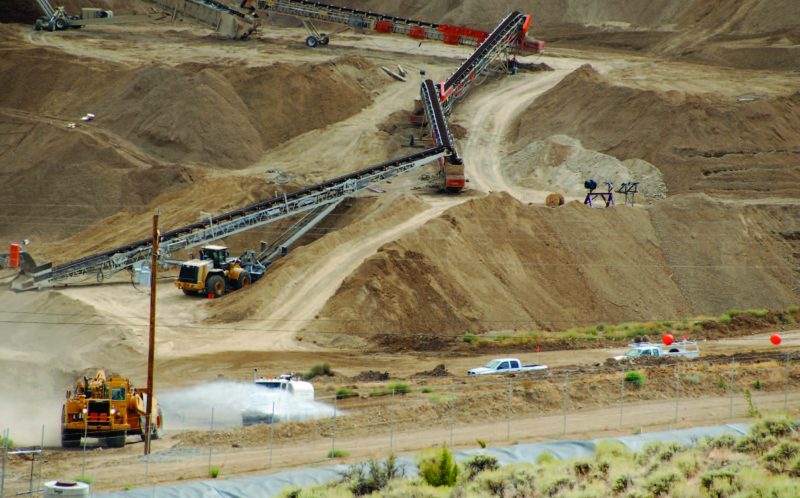 The thunderous crack of massive colliding stones fills my ears as I stand on the observation platform of Coeur Rochester, Inc.’s rock crusher. Awestruck by the colossal machinery surrounding me, I am overcome by the illusion that the advancing conveyer belt wielding a blend of loose soil and half-ton boulders is ready to crush me where I stand. Then, just at the last second, the dirt and rocks avalanche under the deck beneath my feet and make their way into the crusher.
The thunderous crack of massive colliding stones fills my ears as I stand on the observation platform of Coeur Rochester, Inc.’s rock crusher. Awestruck by the colossal machinery surrounding me, I am overcome by the illusion that the advancing conveyer belt wielding a blend of loose soil and half-ton boulders is ready to crush me where I stand. Then, just at the last second, the dirt and rocks avalanche under the deck beneath my feet and make their way into the crusher.
As I stand watching the impressive gears of modern mining turn before my very eyes, my mind wanders to the boomtown turned ghost town that once served as the epicenter of mining activity in the district—Rochester. The rickety mine shafts and skeletons of rusted cars that make up the abandoned settlement now rest several miles from Coeur’s Nevada operations, symbolizing the decay of the mining days of yesteryear and the advance of the revolutionary mining industry of the modern age.
NEVADA’S MINERAL LEGACY
 When the first pickaxes began penetrating the Nevada desert in the mid-1800s, modern mining in Nevada was born. The desire to strike it rich flowed through the veins of Nevada prospectors, just as the glittering gold deposited there flowed through quartz veins millions of years prior.
When the first pickaxes began penetrating the Nevada desert in the mid-1800s, modern mining in Nevada was born. The desire to strike it rich flowed through the veins of Nevada prospectors, just as the glittering gold deposited there flowed through quartz veins millions of years prior.
Nevada’s history is largely one of boom and bust, mines and metal, and success and failure—all for the elusive gold and silver that rested in the ground under the prospector’s boots.
And so began the process of extracting these precious metals from the earth, a fundamental piece of Nevada’s history. Though much has changed since the early days of Nevada mining, large-scale mining operations continue to serve as an essential keystone of the Silver State.
MODERN MINING
People often assume that the old-timers got all the state’s gold and silver during Nevada’s boom days more than 150 years ago, an assumption that couldn’t be more inaccurate. Although many factors are involved in the resurgence of mining in Nevada, modern technology, improved processing methods of rich ore bodies, and high gold and silver prices have made recovering these precious metals from the ground profitable again.
Nevada is home to geological features like the Carlin Trend— North America’s most prolific gold-producing district and the second-largest known gold resource in the world—which makes one thing certain: Nevada is rich. So rich, in fact, that besides having more gold mines than any other state, Nevada accounts for more than 75 percent of the total gold produced each year in the United States.
Between the abundant gold-bearing deposits of the Carlin Trend, the renowned silver district of the Comstock, and many other productive mineral deposits across the state, mining in Nevada continues to be a lucrative industry.
THERE’S GOLD (AND SILVER) IN THEM THAR HILLS
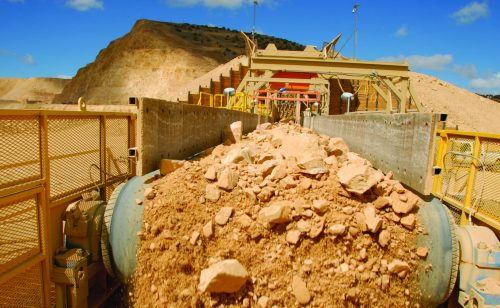 Mining in Nevada began with the earliest inhabitants searching for geological formations that contained deposits suitable for fashioning various tools and hunting equipment. Obsidian, jasper, agate, and quartz were necessary for making spearheads, arrowheads, and various other tools essential to early life in the
Mining in Nevada began with the earliest inhabitants searching for geological formations that contained deposits suitable for fashioning various tools and hunting equipment. Obsidian, jasper, agate, and quartz were necessary for making spearheads, arrowheads, and various other tools essential to early life in the
region. Turquoise mining by the Ancestral Puebloans was evident in present-day Clark County, but is now covered by the waters of Lake Mead in Southern Nevada. Fast-forward thousands of years to the discovery of placer gold in Gold Canyon below Virginia City in 1849—and you have the beginning of modern mining in Nevada.
Sporadic placer mining across the region eventually led to the first major discovery of silver ore in the U.S. in 1859—the Com- stock Lode. This discovery sparked one of the largest booms in Nevada’s history. This boom era lasted into the 1880s, when once- profitable centers across Nevada began to see major declines.
The next boom periods took place in the early 1900s with the discovery of gold and silver in the towns of Tonopah and Goldfield. Both towns celebrated significant mineral recovery until eventually tapering off in the late 1910s and early 1920s.
Silver and gold mining in the state remained relatively stagnant through the depression years, seeing a brief period of recovery due to a government-mandated gold price increase in the early 1930s, before sinking to a near-record low in 1961. In 1962, however, the first significant discovery on the Carlin Trend resulted in the revival of precious-metal mining in Nevada.
Over the next few decades Nevada mining companies such as Comstock Mining Inc., Coeur Mining, Inc., Barrick Gold Corporation, and Newmont Mining Corporation acquired properties and developed projects across the state.
COEUR ROCHESTER, INC.
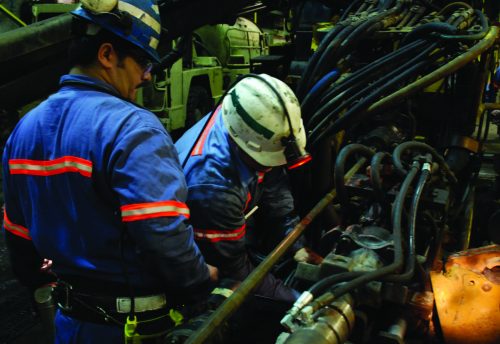 Located approximately 25 miles northeast of Lovelock lies Coeur Rochester Inc.’s mine. Mining in the district began as several small underground mining operations in the late 1800s. Ending an extensive hiatus in regional mining operations, Coeur began large-scale open-pit mining in the area in 1986. As the largest primary silver mine in Nevada, Coeur operates with approximately 270 full-time employees and 35 to 40 contractors on site, many making the daily commute from surrounding communities such as Lovelock and Winnemucca—even Reno.
Located approximately 25 miles northeast of Lovelock lies Coeur Rochester Inc.’s mine. Mining in the district began as several small underground mining operations in the late 1800s. Ending an extensive hiatus in regional mining operations, Coeur began large-scale open-pit mining in the area in 1986. As the largest primary silver mine in Nevada, Coeur operates with approximately 270 full-time employees and 35 to 40 contractors on site, many making the daily commute from surrounding communities such as Lovelock and Winnemucca—even Reno.
However, Coeur Rochester General Manager Robert Stepper explains that the economic impact on nearby communities is much greater than just people employed with the mine. “Between machinery repairs, maintenance mechanics, outside services for fixing our haul trucks, vendors for leach pads and reagents, and fuel, a tremendous amount of people are involved in what we do,” Stepper says. Stepper adds that the mine indirectly supports hundreds of additional jobs in nearby communities.
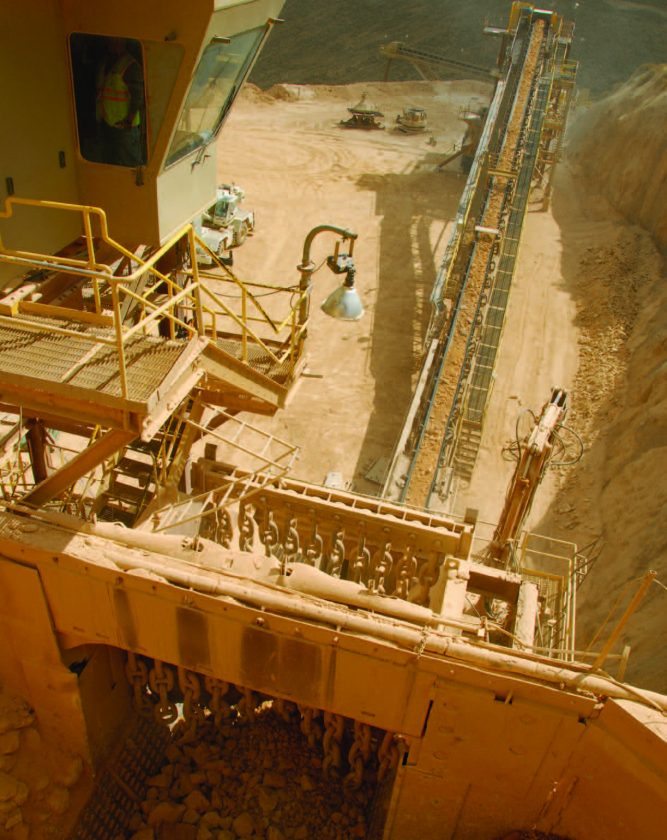 Besides impacting local jobs, Coeur supports Nevada’s future generations. In 2013, the company distributed approximately $15,000 for mining-related scholarships to students in surrounding communities. Coeur has also had a major impact on Nevada’s sesquicentennial celebration. In July, the company donated a 1,000-ounce bar of silver that was melted into 1,000 silver medallions at the Carson City Mint.
Besides impacting local jobs, Coeur supports Nevada’s future generations. In 2013, the company distributed approximately $15,000 for mining-related scholarships to students in surrounding communities. Coeur has also had a major impact on Nevada’s sesquicentennial celebration. In July, the company donated a 1,000-ounce bar of silver that was melted into 1,000 silver medallions at the Carson City Mint.
In order to keep the operation up and running, the mine staff takes major steps to ensure goals are achieved. “Our top two things on this property are safety and the environment,” Stepper says. “We firmly believe that if you don’t take care of both of those, you don’t produce anything.” In order to take care of the safety aspect, Stepper says mine staff must undergo relentless safety training. “When you’re doing the right things all the time, you don’t have to have conversations you don’t want to be having,” he adds. “And that’s all due to really good engineering, planning, and good training.”
From late 2007 until late 2010, work at the Coeur Rochester mine halted due to low silver and gold prices. Greg Robinson, assistant general manager at Rochester, explains how precious metal prices have driven production in Nevada. “Silver and gold prices were fairly low throughout the 2000s, with gold at about $200-$600 [per ounce] and silver at $4-$10 [per ounce],” Robin-son says. “But during 2009-10, metal prices started climbing, and suddenly the silver and gold that was left in the ground becomes economic again.” 2013 production at Rochester is expected to be 3.7 to 4 million ounces of silver and between 34,000 and 36,000 ounces of gold.
COMSTOCK MINING INC.
Comstock Mining Inc. is a Nevada-based gold and silver mining company operating in the Comstock District of Silver City and Gold Hill. Working in the most historic mining district in the state, Comstock Mining plans not only to recover precious metals from the area, but has also been facilitating restoration projects of several historic Nevada buildings both directly and through the newly formed Comstock Foundation for History and Culture.
With approximately 110 full-time employees, and 100 more contractors on site, Comstock Mining operates seven days a week to get the gold and silver out of the ground. The operation covers 6,000 acres and includes seven resource areas. In 2013, Comstock Mining set the goal of removing 20,000 ounces of gold from the mineral-rich area. As of September they were squarely on track for achieving that goal and have estimated twice that amount for 2014.
During a recent visit to Comstock Mining’s operation in Silver City, Editor Matthew B. Brown and I set out in hopes of grasping a better understanding of modern mining in Nevada. We accompanied president and CEO of Comstock Mining Inc. Corrado DeGasperis as he showed us how mining in the area has changed since the days of the pickaxe, pan, and pack mule.
As the operator of one of the newest gold- and silver-mining operations in the state, DeGasperis checks constantly to ensure everything is running smoothly. This involves everything from minimizing dust kick-up on roads to inspecting the heap leach pad—an area designed to remove gold and silver from the dirt. Comstock Mining’s leach pad currently processes 1 million tons of mineral-rich ore per annum (year).
On the hillside adjacent to the heap leach pad sits an old Virginia & Truckee Railroad car, while a solitary wild mustang grazes the dry grass amongst the intricate exposed geology of the Comstock. These days, the V&T serves tourists who visit the region. “One of the most commonly asked questions on the V&T was, ‘Is there any modern mining happening on the Comstock?’” DeGasperis says. “Up until now the answer’s been no.”
Comstock Mining believes its reclamation projects are as important to the company as mining gold and silver. They are taking major steps in returning the landscape to its natural state; even looking back to the era before pickaxes first made cuts into Nevada soil.
Dave Thomas, director of mining operations with Comstock Mining Inc., says the company has extensive plans for reclamation. “When we’re done extracting the minerals we want to return the land to the condition it was pre-1850,” Thomas says. The reclamation process involves reforming the landscape and planting new vegetation.
Besides just reclaiming the land, Comstock Mining has also purchased the Gold Hill Hotel—the oldest continuously operating hotel in Nevada established in 1861—with plans already in motion revive the declining business.
BEFORE THE BULLION
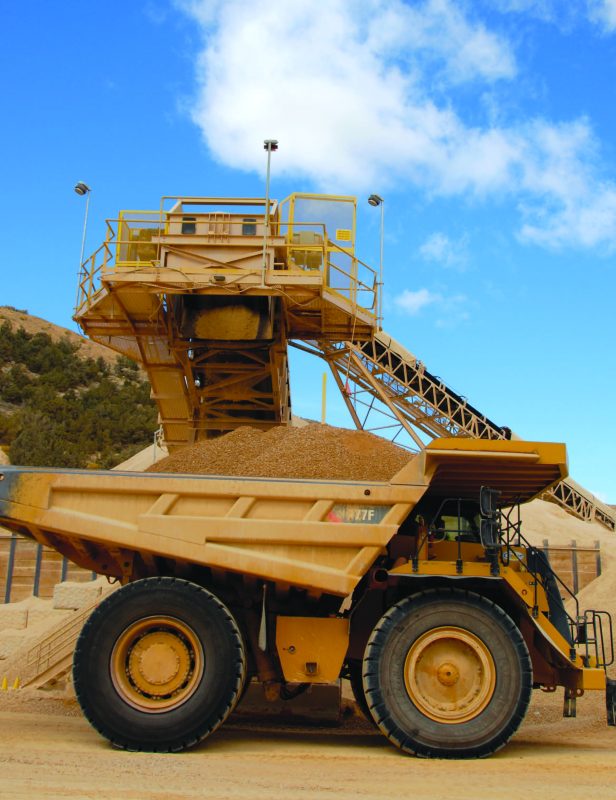 Although Comstock Mining and Coeur Rochester each have several differences in the metal-extraction method, the process is fundamentally the same. Both companies use an industrial mining process called heap leaching to extract gold and silver from the ore.
Although Comstock Mining and Coeur Rochester each have several differences in the metal-extraction method, the process is fundamentally the same. Both companies use an industrial mining process called heap leaching to extract gold and silver from the ore.
The process begins by surveying the ground to see if it has a mineral content that is considered profitable. Once a profitable section has been discovered, the mineral-rich ore is loaded into dump trucks capable of transporting enormous amounts of material (100 tons at Coeur and 40 tons at Comstock Mining). The material is then loaded into a series of devices called crushers, which break rocks into more manageable sizes and eventually into the ideal size to begin extracting precious metals.
The main crusher at the Coeur mine is an impressive piece of machinery which does one thing best—crush rocks. The dump trucks at Coeur line up to empty their 100-ton loads into a hopper, which collects ore and feeds it through a series of different processes. While moving down a conveyer belt, a powerful magnet as large as a pick-up truck removes any scrap metal—including old pickaxes, mining carts, and other metal pieces abandoned during the past century—from the ore and deposits it into a container. The ore then feeds into the crusher, which uses large metal slabs to crush and grind rocks into smaller sizes.
The crushed material then travels over a series of conveyer belts before it is again loaded into a dump truck. The material is then loaded onto a heap leach pad, where a cyanide solution penetrates the material, extracting the gold and silver from the rest of the dirt (see sidebar on page 75 for more information). The solution then becomes “pregnant” with gold and silver, before it is treated to remove the target metals. This leaves a remaining gold-silver mixture called doré, which is processed and refined to separate the gold and silver.
Though Coeur and Comstock are both open-pit mines that use the heap leach process, there are several other mining companies across the state that employ the heap leach process in combination with other techniques.
BARRICK GOLD CORPORATION
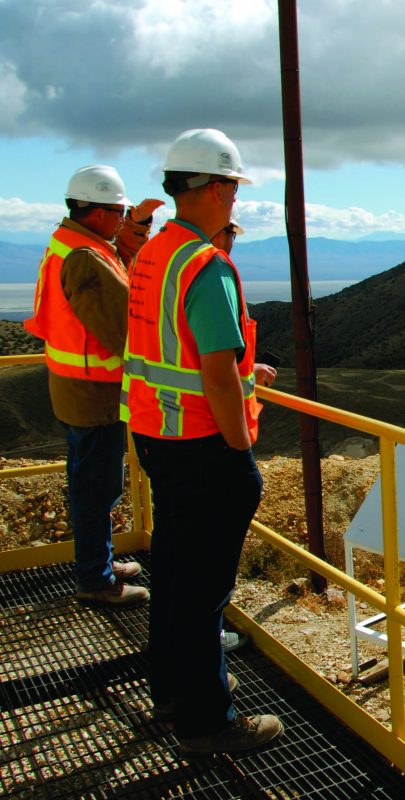
After acquiring the Goldstrike mine— located northwest of Carlin—in the late-1980s, Barrick Gold Corporation has since recovered billions of dollars in gold. The company now operates or holds an interest in a total of seven operations in Nevada, including a discovery called Goldrush, which is in the early development stage.
In the first half of 2013 alone, the Goldstrike mine produced 417,000 ounces of gold. The operation utilizes a combination of open-pit and underground mines, which follows the Carlin Trend.
The property consists of two processing facilities: an autoclave circuit, which is used to process the sulfidic refractory ore (mineral-bearing material that is resistant to recovery by standard cyanide extraction), and a roaster, which is used to treat carbonaceous refractory ore that is not suitable for autoclaving.
The Goldstrike mine takes advantage of what geologists call “disseminated gold,” which means the gold is spread throughout an area. The gold is so spread out, in fact, that it generally takes a microscope to see it.
Although the gold is microscopic, it hasn’t stopped Barrick from collecting a lot of it. At the Goldstrike site alone, Bar- rick has produced more than 40 million ounces and estimated that 12.3 million ounces of proven and probable gold reserves still remain.
NEWMONT MINING CORPORATION
Newmont Mining Corporation has been mining in Nevada for nearly 50 years, pouring their first gold bar on May 4, 1965. Newmont’s Nevada operations mostly focus on gold recovery; however, the 14 open-pit mines, four underground mines, and 14 processing facilities in the state also produce silver and copper.
Newmont’s properties include the Phoenix gold/copper mine, located 10 miles south of Battle Mountain, the Twin Creeks mine, located approximately 30 miles north of Golconda, and the Midas mine, which resides near the town of Midas, and Carlin, which takes advantage of mining the prolific Carlin Trend. Newmont also partakes in the Turquoise Ridge joint venture with a subsidiary of Barrick Gold Corporation.
MINING’S HEAVY LODE
Mining in Nevada has come a long way since the Comstock days. The evolution of mining techniques and technology over the past century and a half has drastically changed the face of mining in Nevada. In the end, though, the modern mines share the same mission as the old-timers that set foot in the rich Nevada soil so many years ago: get the precious metals out of the ground.
Man’s yearning for gold and silver has been engrained in our culture since long before the machines now designed to recover it came to fruition. And as society’s ever-growing consumption of precious metals continues to transform, so the odyssey of mining in Nevada remains malleable to our wishes.

